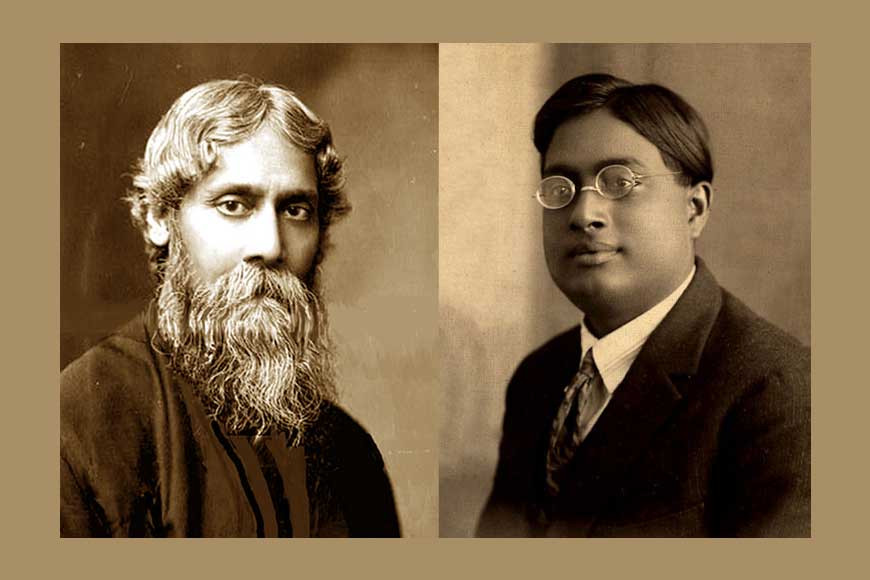God Particle Boson excited Tagore

A century ago Rabindranath Tagore describes Boson particle through Nataraj Nritya!
Concept of Light is often presented with contrasting pictures. Experiments often suggest that light consists of tiny particles that look like innumerable corpuscles. This shower of minute objects in today’s parlance are called Bosons, after the name of their discoverer Satyendra Nath Bose. All across the globe physicists are today excited about Boson and have finally discovered the God Particle, or so do they conclude. But that very God Particle had excited Tagore decades ago.
About these waves and particles Tagore writes: ‘What is more mind boggling is that while the external manifestation of light is either a wave or a particle, what appears in the micro world is neither this nor that --- we call it Radiation. One of the most bewildering entities of modern science is the little, hidden universe within our grand universe – and this is the atomic world. This tiny world is invisible to us but is that at the very root of all creations.’
Physicists now have found ways of breaking open the seemingly impregnable doors of atoms to reveal sub-atoms – namely electrons and protons. Recently, scientists have discovered the antiparticle of electron called Positron, which has the same mass as electron but is positively charged. Though Tagore did not live to see the discovery of Positron, an object of great interest in the recent CERN experiments in Geneva, Tagore had written in Visva Parichay:
The fact that an atom is disintegrable has prompted scientists to device machines that can penetrate inside the atom to probe its internal structure. Let me now give an example of the lightest of atoms, namely Hydrogen. At the centre of Hydrogen atom resides an electrically charged particle, called proton and in the orbit of the proton revolves a single electron. Proton is positively charged, while electron is negatively charged. The negative electron is itinerant while the positive proton is heavy and static.
 Rabindranath Tagore's House Udayan
Rabindranath Tagore's House Udayan
The Large Hadron Collider in Geneva is indeed a successor to the machines that Tagore had alluded to. In the CERN experiment, physicists are busy studying the collisions of protons and antiprotons moving at extremely high speeds. The question is: What is providing the binding between the quarks that constitute the proton? Just as the light particle or photon, which is a Boson, provides the binding between the proton and the electron, a hidden Boson called the Higgs Boson is thought to provide the binding between the quarks.
Also read : Rabindranath Tagore’s ‘Window to Science’
In pursuance of Tagorean odeas of Visva Parichay a quark can exist in two equivalent symmetry states, akin to the twin brothers, Luv and Kush of the Ramayana. Quarks are endowed with colour, but Luv and Kush are identical with no mass difference. Then how can we distinguish between them? Now Rishi Valmiki enters the plot, who is so far hidden under white termites and who presents Luv with earrings. Now there is no problem in separating the twin brothers – thus the symmetry gets broken. In the process Luv attains additional mass. Simultaneously, Valmiki also gets to be exposed and that is the Higgs-Boson like particle discovered recently in CERN.
What captured Tagore’s imagination was the Taranga or vibrations as he identified each Taranga with the elements of nature, universe and science. In quantum mechanics, Taranga is energy and the latter is equivalent to mass, in accordance with Theory of Relativity. Mass is an attribute of particulate matter, while vibration is a wave, which is the essence of wave-particle duality. What we perceive in this material world is matter, whereas the perception sends waves in our brain through neurons. It is the vibration of these waves that the poet calls as Nritya or the Cosmic dance of the Universe.
(Inspired by A random walk in Santiniketan Ashram by Sushanta Dattagupta, and other related publications on Santiniketan)











